WHITEHORSE
Change of plans
After Paul had last night the big
issue with the battery and trying to figure out where the problem is: the pump
or the battery? Gine said: I think we should go to Whitehorse and skip Atlin
and then we can always hit it on the way back. So let’s head to Yukon’s capital
and get everything sorted out.
Breakfast at the Yukon River
after driving for a half hour we
stopped at the Yukon River Parking area for breakfast and a nice view on the
river and the bridge. What is kind of cool – half the vehicles on the road here
are RV’s and since we are all on vacation there is lot to talk with each other.
Get ideas and talk.
We find an RV Park
The first on our journey is to find a
spot for the night: we didn’t want to stay to far out of town and also wanted
electricity so we can fully charge up the batteries: we decided to stay in the
Hi county and as we went around to check out the available sites – and arguing
about the pro’s and con’s of different sites, We finally made a decision and as
Gine went back the site is gone!! Gine went back to tell Paul to pull out and
then we went in to book another site: once there we plug in and Paul does some
checking: our verdict – the RV batterie is doing ok, but the two batteries in
the truck are old and likely won’t charge properly anymore.
The Capital of the Yukon - Whitehorse:
- 80% of the Yukon population lives here – with the 34.000 inhabitants you find all you need
- It got its name from the rapids of the Yukon River where the frothing water looked like the manes of white horses
- Once it was a tent-and-cabin city and boomed once the White Pass Railway from Skagway was completed and it was the termial for traight to be transferred from railway to riverboat for shipping to Dawson city
- The 2nd surge came during the building of the Alaska Highway when within 8 month the population jumped from 500 to 8000
- It became officially the capital in 1953
- After the Alaska Hwy got built the steam wheeler era was over and a car dealer was now in the former shipyard
- What is so unique about Whitehorse the next city is 1000 miles away and the next large city is Edmonton 1994 km
- it is also the driest city in Canada - but every month (even in July) it can snow
- And in 1920 the first palnes landed it and the first air mail came in Nov 1927
How difficult is it to get
batteries????
#1: we fill up gas and the pump didn’t
work as expected – so it took a bit longer. Then Paul calls around Napa – we
went to Kal-Tire and ended up at Canadian Tire: ok we go in get the price
sounds good – half price of Napa, we go out, take the old batteries out (did
you know that the screws can be super rusty) – the bring them in the store, get
the new ones with the shopping cart bring them back out and then Paul tries and
it is very difficult to get the first one in and the other one is not possible
to secure – we went in to check if we can get different holders to secure – not
possible – so back out, taking the heavy batteries out and we bring them back,
they don’t fit they are too wide. One guy then searches to find our old battery
and yes it is thinner, ok then let’s try this one: it’s the same number as the
old one, but not as good – we go to customer service, get a 10 $ refund and
then back out, as Paul tries to fit it in, the battery is too long. Ok Paul
said no fooling around, that is the wrong battery and we walk back in the store
and had nearly an accident with the cart flipping over and then the big
question what to do, finally we come to a battery which is smaller and the guy
was nice enough and went with us back to Customer Service as the last exchange
was done incorrectly, we needed the supervisor and finally all is figured out:
and see there two hours later we have the new batteries in our truck with
screws which got a lot of Wd40.
The last oat milk
ok next part of the journey: shopping
– we discovered it is not so easy to get oatmilk or only super price if you are
lucky. Walmart first: no oatmilk there – but we got some more peanut butter.
Next Superstore and Gine found Oatmilk – as she started to load up the cart
another guy came and also took. After he took and Gine took the rest (I mean 18
x which is by the way on sale) – the shelf is empty!! Back in the truck everything went into the
camper and there is no floor space available anymore!!!
At the visitor info center
we drive to the visitor info center
and then first clean up the floors: the tools get stashed away – the Kitty
litter underneath and then we clean out the hidden storage in the back and
would you believe it we can stash away all the milk. Inside Gine quickly checks
regarding the White Pass train and yes it runs from Skagway in return only. Ok
we will check it online.
Market in the Shipyard Park
Nearly 5 pm Gine said we do the scenic
route back and first we stopped at the Shipyard Park – looks like there is
something going on, parking and we go in: it’s Market time but as we walk
through and look at it, we discover one thing it is not cheap here – so we have
a look around, see the oldest house the Pioneer hotel in Whitehorse (from 1901)
along the Yukon River and enjoy the fun.
A quick check of the SS Klondike
On the way back to the campground we
stop at the SS Klondike – to have a look at this steam wheeler on the outside
to get a bit in “Goldrush mood”. Lots to read and they also start to do some
repairs – it will be interesting if all is done when we are back in another 2
month.
Shower – Electricity and Internet
Back at the campsite: Plugging the
electricity in – so our batteries get fully charged. Then we get a long shower
– wow isn’t it cool to have a hot nice shower after such a long time!!!! And
then with free internet we can do some planning (haha – joke as this is likely
the slowest internet ever and it pops in and out). As we sit we hear the
thunder again – you think it will rain tonight??? I mean it was pouring when we
left superstore.
Hi Country RV Park
We get ready: That means we dump –
Paul cleans the truck & camper. And we discovered last night one propane
tank got empty: good thing so today we filled up one big one and refilled the
small one. We are now fully prepared to keep going.
Gine also had to quick check out all
the old cars and carriages sitting around from the good old times: it is
amazing on how many rusty old vehicles are here – I’m sure we could see
thousands of them if we would have enough time.
Yukon Transportation Museum
No question we have to visit it – gine
thought it was super cool because here you are considered Senior once you are
over 55.
Outside we were greated by a DC-3:
the world’s largest Weathervane: this one was flying in the Yukon from
1942-1970. It was then bought and in 1981 mounted on a pedestial in front of
the Whitehorse Airport greeting us – always pointing her nose in the wind
This was a different Museum: as it had
everything from dog sleds and how people went over the White pass, as well as
lots of old Army vehicles from the Building of the Alaskan highway.
We learned about the transportation of
the high north:
- Before the planes it took 4 days per boat from Vancouver to Skagway, and then the train to Whitehorse, when in 1937 the first plane arrived in Whitehorse from Edmonton, it changed the life in the Yukon
- The Dog - Yukons’ best friend: In the time before cars, Yukon life would have been unimaginable without the dogs: during the gold rush a good dog cost between 10-500 $ and in 1898 between 4000-5000 dogs lived in Dawson City. At that time the NWMP had 294 dogs with new transportation methods in 1907 they only had 27 dogs left and they had none by 1920. They did had a cool snow-sled on display. If you look closely at the Yukon Flag you can see the dog – because they help you. One guy said “as long as you can crawl and get into the sleigh, the dogs would bring you home, a skidoo wouldn’t do that.” – they were friends and protectors
- Steamwheelers were a great way to move, but only could be used from May when the ice broke up until October when the river froze over. In Winter they could use the dogs to go over the ice.
- 46 before the Attack of Pearl Harbour the talk was about a road – the earliest discussion were in 1895, but no-one took it seriously – then the Northwest staging route started with the Airports, and after Pearl Harbour the Alaksa Highway changed and it connected to the south
- The Canol Project: after the bombing of Pearl Harbour: The US thought it is not save to ship the oil and gasoline via ship because of the threat of the Japanese and the Canol Project was born. Canol = Canada Oil was funded by the US military: the oil comes from the NWT – they built refineries in White horse, along the pipeline they built 600 miles of road, telephone lines, airstrips. 50.000 people worked on this project, from the estimated 30Mill it ended up to cost 134 Mill $. It was very controversial as the Japanese threat to the shipping line never happened, and lots of people were used when they could have been used somewhere else. It was actually cheaper to ship oil via the Alaska Hwy and the whole project was shut down in 1944
- Mapping of the Yukon: with the building of the Alcan and the Pipelines – a lot of white areas on Yukon’s map got filled. The US government said “We don’t care how much it costs, charge us whatever it takes” – this was the start of lots of planes of private companies surveying the area: it was not that accurate from the pilots – 50 miles in real were 1 inch on a map and sometimes the maps were 50 miles off
And we saw cool things from the north:
- a beautiful quilt made by different women which show the Alaskan Highway
- some super early editions of the Mile post – and Paul liked the post cards of the motels with the super old cars
- old post cards, that showed gigantic fish as an advertisement for the Yukon – I’m not sure if the fish are really that big here.
- Pictures of the frenzy and all the people making it there
- a nice setup with an old-fashion town with cars, stage coaches, train – it made the life in the old Yukon alive.
- a beautiful trainset which showed how Whitehorse looked like over a hundred years ago
- an old snow-mobile: in 1968 the expedition by Ralph Plaisted brought the skidoo to the North Pole – the one we saw here was a similar one as the one going to the North Pole. Skidoos got introduced in 1959 and the Bombadier snow cat
- a sleigh which brought passengers over the White pass – by the way there was no cover except a buffalo-fur and some charcoal foot warmers - amazing what those stage drivers in those days did: by the way officially they did not drove the sleight if it was colder than -40C, but since the roadhouses often didn’t had a thermometer – they often still were on the road.
- Super nice pillows looking like stone makes it fun to sit around the campfire
- The Overland trail changed in the 1920s when they used the caterpillar tractors which could pull up to 12 sleighs – this reduced transportation cost by 85%and they started to replace the horses
- In the hanger were some super cool trucks – they called the vehicles of victory as they were used to built the Alaska Highway
- the oldest helicopter in the Yukon: the one on display went down in Aug 1952 near Old Crow and it was sitting there for 62 years. This Hiller was brought to the Yukon for survey
- the Yukon licence plates: they had different plates over the course of the year at the beginning it said “Land of the midnight sun”, then it went from the “home of the Klondike” to the “The Klondike” and we looked for our years of 1951 & 1966: by the way at the beginning the plates were hand painted you got an id number assigned and then had to get your plate made. Here they started to lisence the vehicles in 1914 – the last place in Canada to do it.
- The mission van: the Canadian Sunday school developed a van where one “Vanner” mostly a british woman and a driver/mechanic where on route for four month and drove around to remote communities to teach Sunday school. They lived in the Van and drove along the 1931 km of the Alaskan Highway. The first van went out in 1949 and they did this until 1970
- The big overlander: LCC-1 LeTourneau Land Train: ok so this carrier was travelling from Fairbanks to Greenland and back from 1954-1962. So what is that thing? The US started to built this oversized trucks that could travel nearly every terrain so they didn’t have to built railroads and they could go in back country. The largest was 183m long: and the thing is huge!!! I bet it was amazing to see
- Straddle Carrier: it was to move shipping containers – it is argued it the White Pass & Yukon Company created the first intermodal shipping with the first container ship in 1955
And let’s not forget we are here at another
historic Alaksa Hwy marker: we are at mile 917.

 Whitehorse, Yukon, Canada
Whitehorse, Yukon, Canada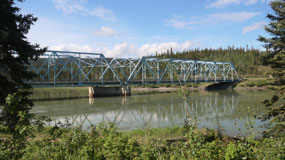

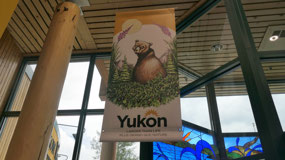
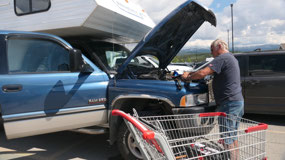
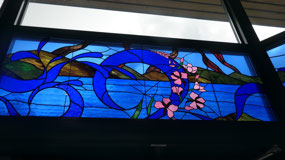
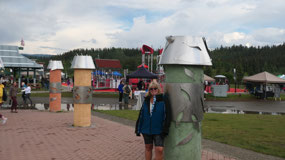
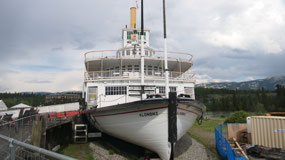
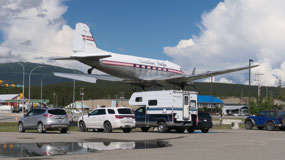
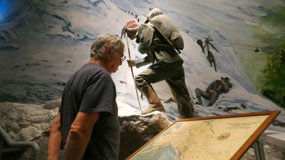
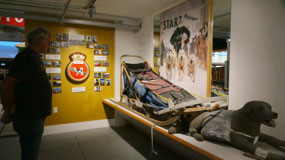


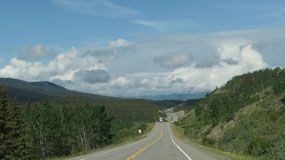
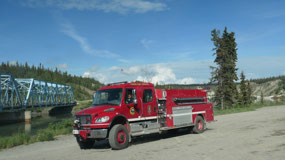
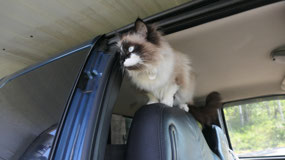
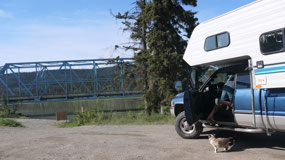
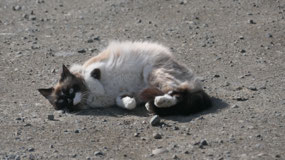
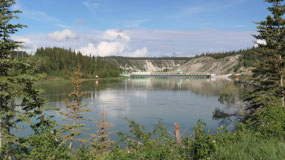
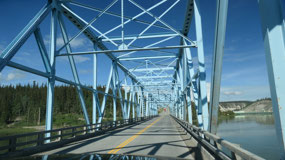
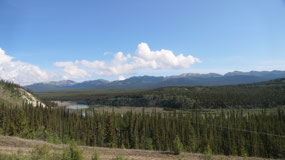
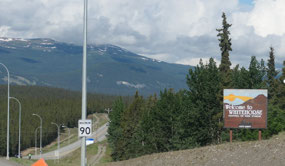
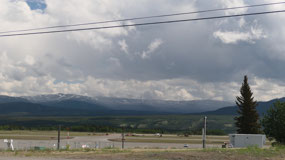
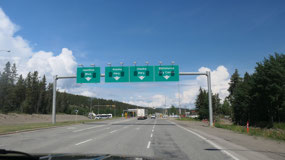
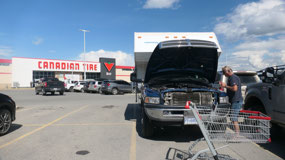
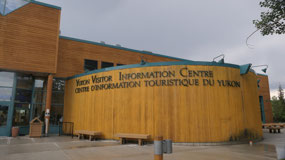
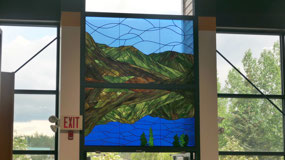
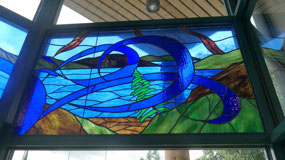
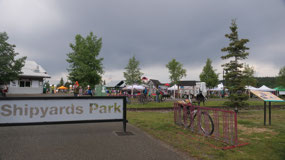
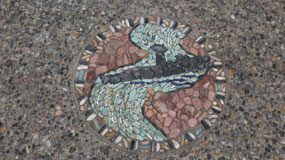
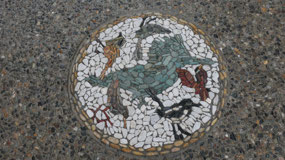
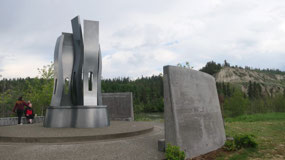
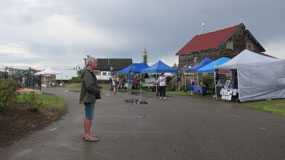
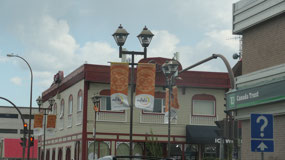
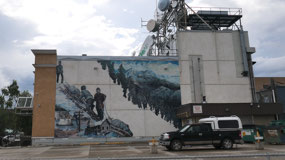
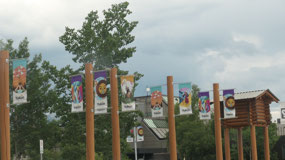
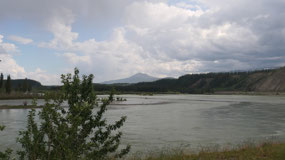
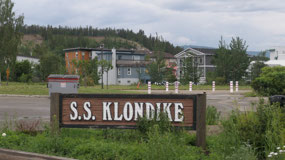
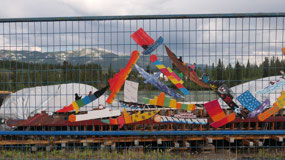
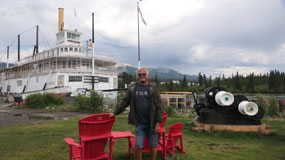
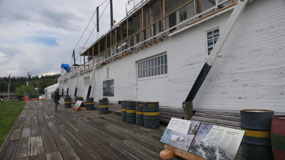
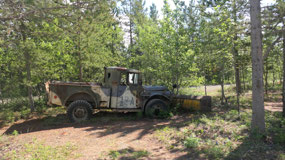
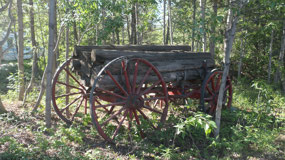
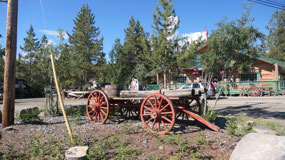

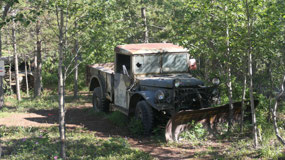
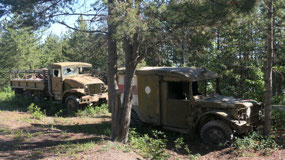
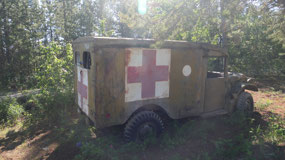
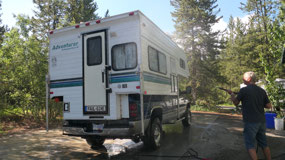
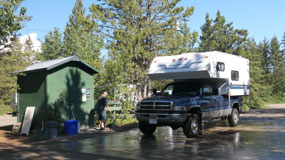


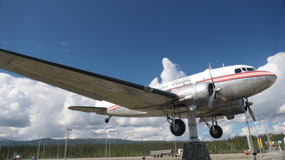
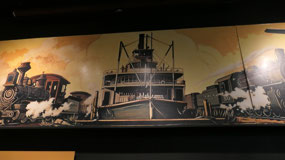
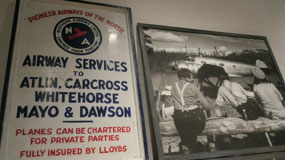
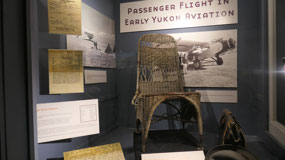
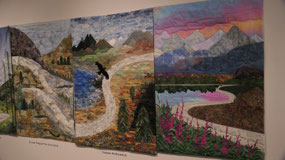
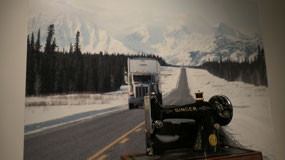
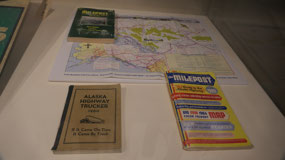
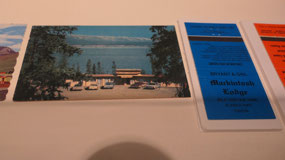
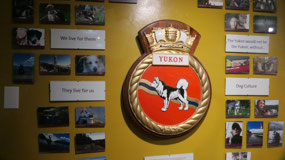
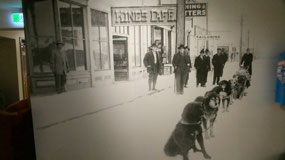
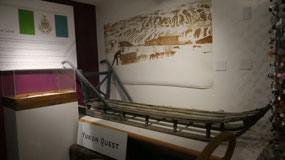
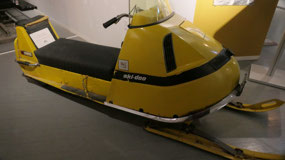
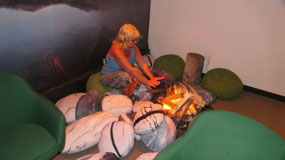
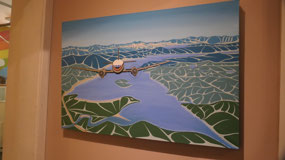
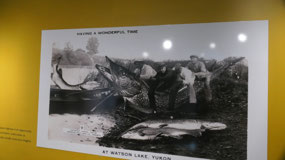
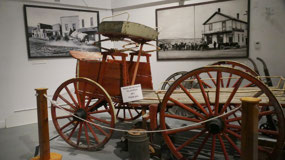
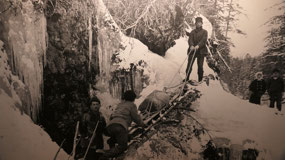
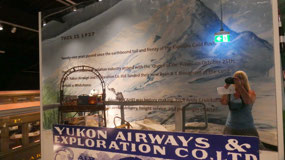
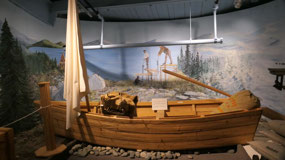
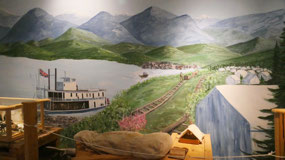
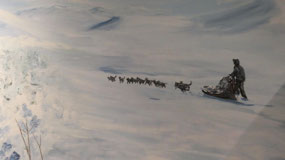
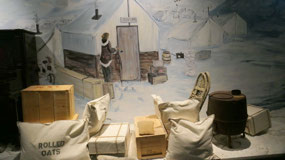

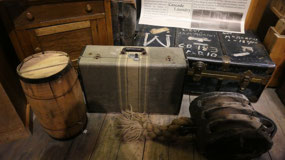
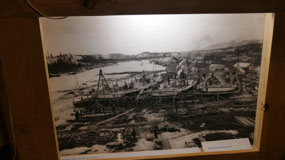
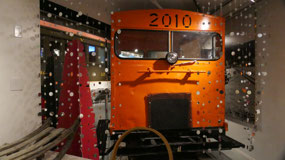
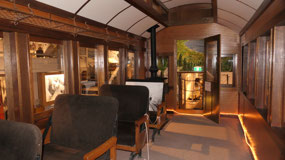
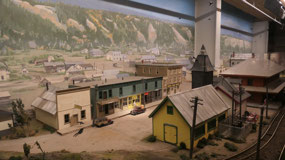
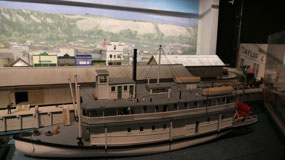
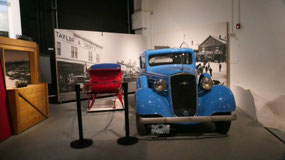
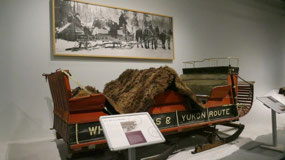
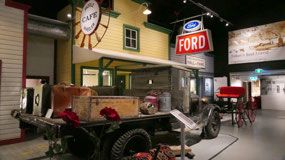
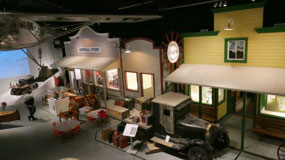
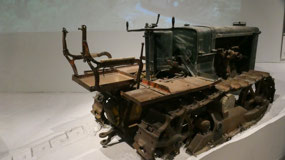
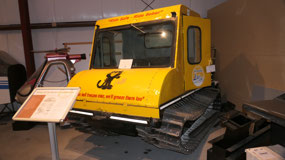
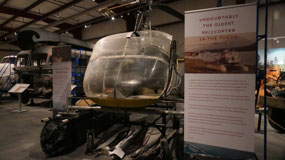

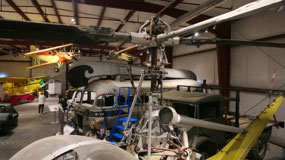
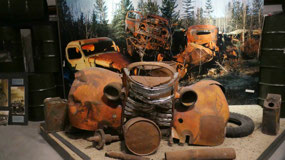
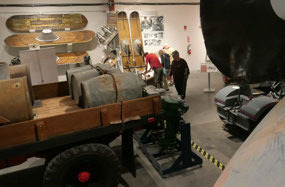
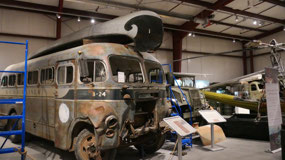
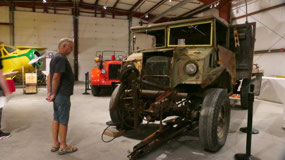
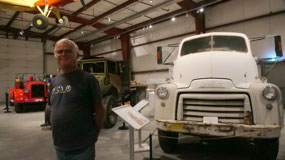
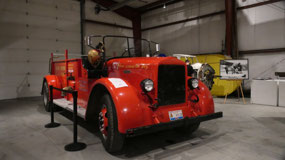
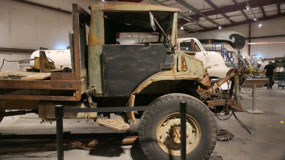

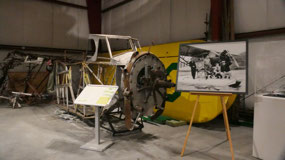
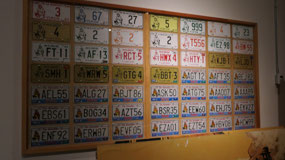
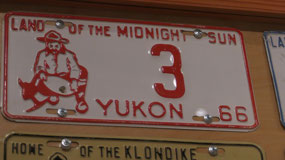
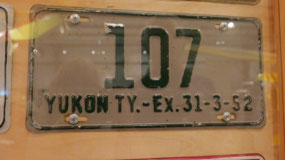
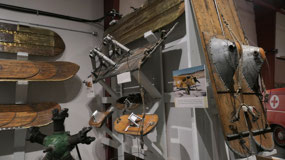
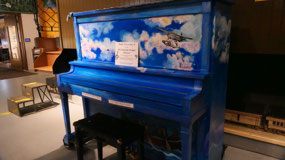
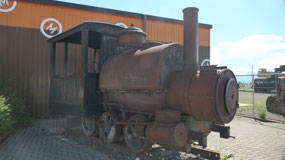
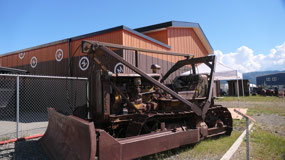
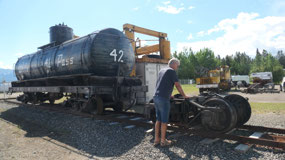
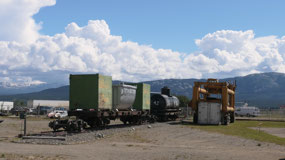
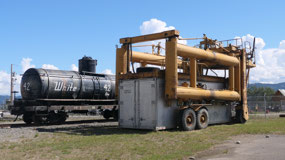
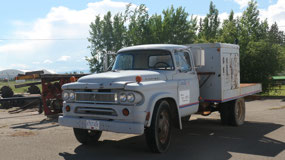
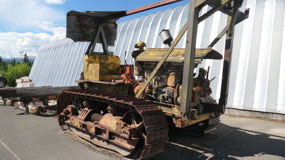
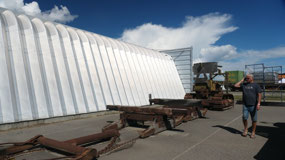
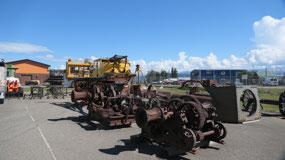
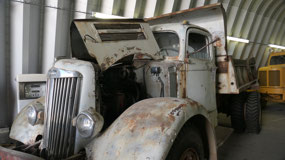
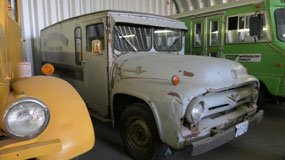
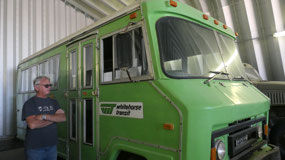
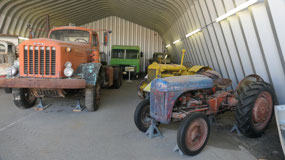
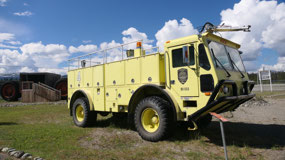
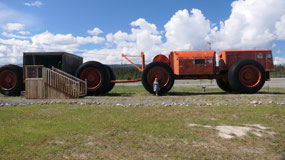

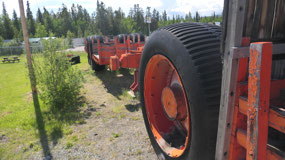
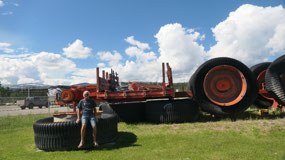
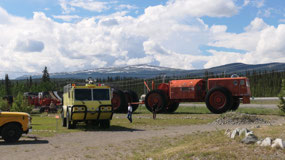
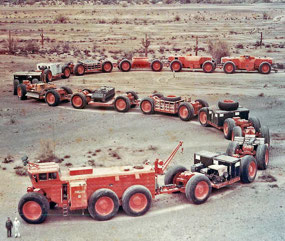
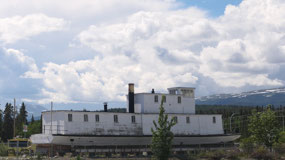
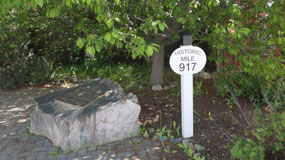
2025-05-22